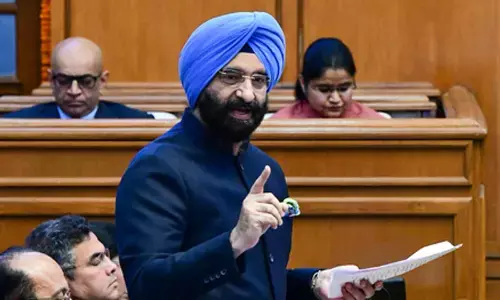Overcoming challenges while implementing inclusive learning environment

Inclusive learning environments in schools are becoming more popular as educators recognize the importance of accommodating diverse student populations. Creating an inclusive learning environment in schools is crucial for ensuring that all students, regardless of their backgrounds and abilities, have equal access to education. Such environments foster a sense of community, encourage collaboration, and promote equal opportunities for all students to learn and grow. However, implementing such an environment can be challenging, as it requires a great deal of planning, preparation, and dedication from educators, administrators, and staff. Here are some strategies to understand and overcome the challenges in the implementation process and provide strategies for overcoming them.
Start with a plan
Creating an inclusive learning environment requires a comprehensive plan that involves all stakeholders. The plan should outline the goals, strategies, and timeline for implementation. It should also identify the resources needed, such as funding, staff, and equipment, and the roles and responsibilities of each stakeholder, including teachers, staff, and administrators.
To create a successful plan, schools can engage in open communication with all stakeholders and gather input from students, parents, and community members. They can also seek guidance from experts in the field of inclusive education, such as disability rights organizations, education advocacy groups, and government agencies.
Provide professional development opportunities
Professional development is crucial for ensuring that teachers, staff, and administrators have the knowledge and skills needed to implement an inclusive learning environment. Professional development can include workshops, seminars, and training sessions on topics such as universal design for learning, differentiated instruction, and culturally responsive teaching.
Schools can also provide ongoing support for educators through coaching, mentoring, and peer learning communities. By investing in professional development, schools can ensure that all educators have the tools and strategies needed to provide a high-quality education to every student.
Address stigma and bias
Stigma and bias can create significant barriers to an inclusive learning environment. Students from marginalized communities, students with disabilities, may face discrimination and bias from their peers and even from educators. To address stigma and bias, schools must create a culture of inclusivity that actively challenges stereotypes and prejudice.
One strategy for addressing stigma and bias is to incorporate lessons and activities that celebrate diversity and promote understanding and empathy. Schools can also establish anti-bullying policies and provide training for teachers and staff on how to address and prevent bullying and harassment.
Leverage technology
Technology can be a powerful tool for creating an inclusive learning environment. Technology can provide students with access to educational resources and tools that may not be available in traditional classrooms. It can also provide accommodations and support for students with diverse needs, such as text-to-speech software, closed captioning, and assistive technology devices.
Schools can leverage technology by investing in devices such as laptops and tablets, as well as software and apps that support inclusive learning. They can also provide training for teachers and staff on how to integrate technology into their teaching strategies and how to provide support for students who use assistive technology.
Seek community partnerships
Creating an inclusive learning environment requires the support of the entire community, including parents, community organizations, and local businesses. Schools can seek out partnerships with community organizations to provide additional resources, such as funding, volunteer support, and expertise.
Community partnerships can also provide opportunities for students to engage in experiential learning and develop skills that are relevant to their future careers. By working together with the community, schools can create a more inclusive learning environment that prepares students for success in college, career, and life.
Integrate Diversity in Curriculum
Integrate Diversity in the Curriculum: Schools must integrate diversity into the curriculum. Selecting materials that represent diverse perspectives and experiences, inviting guest speakers or experts from diverse backgrounds, and incorporating culturally responsive teaching practices can help create an inclusive classroom environment. Involving students in co-creating the curriculum can also help ensure that all perspectives are represented.
In conclusion, creating an inclusive learning environment in schools requires a comprehensive plan, ongoing professional development, and a commitment to addressing stigma and bias. Schools can also leverage technology and seek out community partnerships to provide additional resources and support. Implementing an inclusive learning environment is not only the right thing to do, it is also good for students, teachers, and the school community as a whole. To ensure that students have an enriched experience and thereby become more informed citizens.
(The author is Academic Director of Bhai Parmanand Vidya Mandir, East Delhi)















